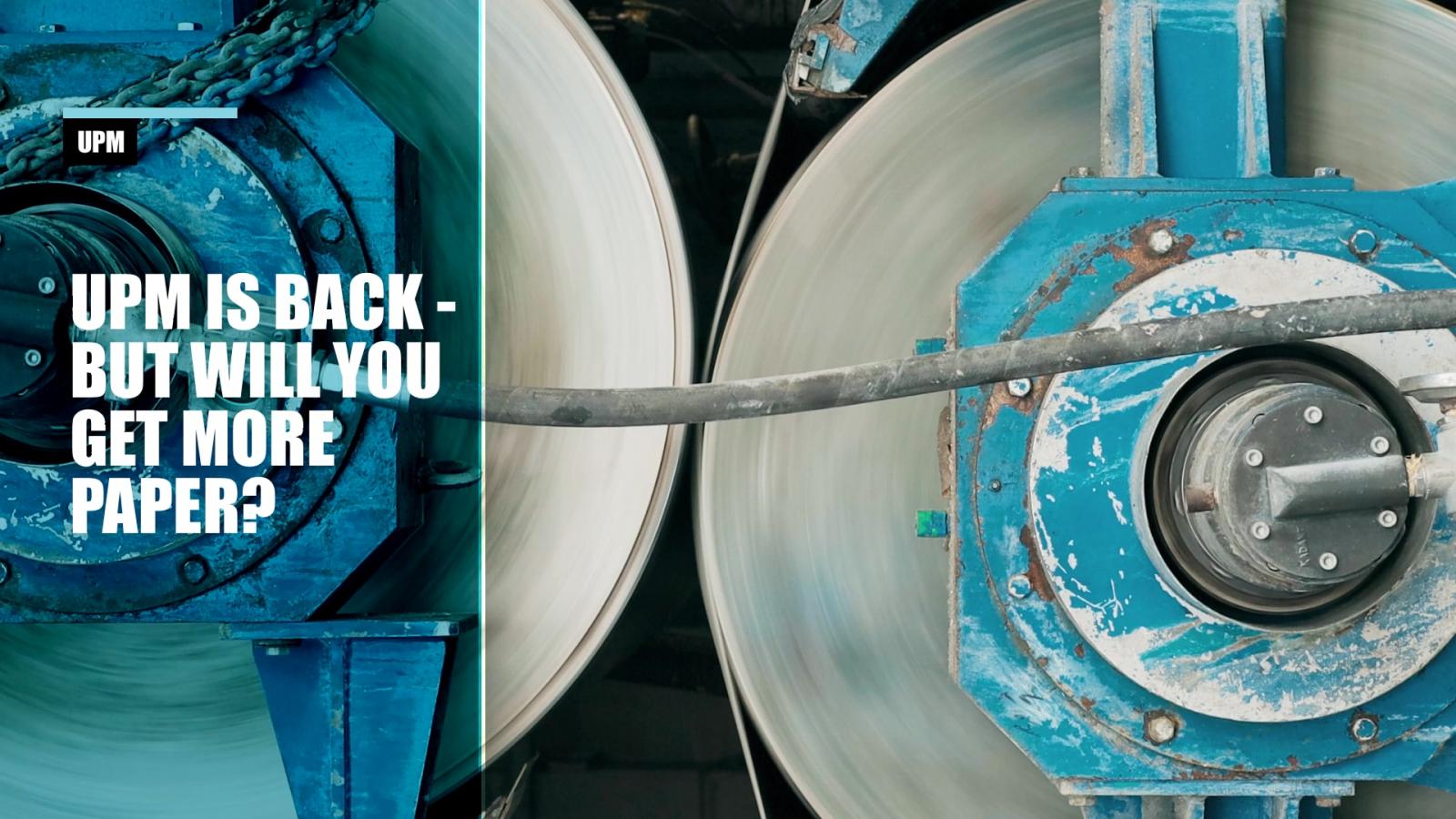
By Editor Morten B. Reitoft
The more than 100-day strike at UPM in Finland has been followed with great interest from the entire industry. Dominant influencers from European federations, American organizations, Intergraf, and many more have urged both sides to end the strike. It took 110 days, and most likely, non of the above influencers played a significant role in ending a conflict about labor conditions and UPM's right to organize the labor.
Jo Francis from Printweek has written an article describing the agreements; you'll find it here.
So now everything will be good again, you may think? We can hope, but several things are interesting if you look at UPM's 2021 financial report. First, UPM had more than 20% growth in 2021 and has now exceeded the pre-pandemic level. The EBIT grew more than 80%, and the earnings were considerably higher than in 2020 (of course). So despite the strike, UPM has been able to deliver solid results and growth. The financial investor presentation mentions the strike, "During the strike, we have been serving our customers from our mills outside Finland as much as possible."
So will the end of the strike change supply significantly? Probably not much, and when you read the investor report, Communication Papers and Speciality Papers are two business areas with negative growth. Even for Communication Papers, the sales deliver a negative EBIT to the group.Paper prices play a role, of course, and as we have seen increasing paper prices for a long time, UPM still expects further price increases in 2022. According to the Investor Report 2021, the price increase per tonne is significantly higher in America compared to Europe, and China has, with a few peeks, a price comparable to January 2013. Quite interesting to see that the average price per tonne in China is now almost on par with paper prices in Europe end of the year 2021 - indicating that Europe has been the continent where prices for paper have been the lowest for almost a decade. With low prices in Europe, the decreased demand during the pandemic probably caused more paper companies to reconsider their position. Stora Enso announced the closure of two mills at the end of 2021. The Italian paper group Pro-Gest also announced production closing for its six mills due to increased energy prices. More are likely to consider their future in the graphics arts industry!
However, UPM is a great business, and shareholders can be satisfied with solid results, a diverse company, and growth in almost all business segments. Will supply change much for the PSPs and converters in the Graphics Arts industry?Unfortunately, I am a bit pessimistic here. Increasing prices is an incentive to increase supply - on the negative side, UPM could consider focusing more on the stronger growth segments like Biorefining and Energy, contributing to almost 2/3 of the total EBIT in 2021?
With the closing of other mills, the supply will be more aligned with supply, and normal market mechanisms will balance prices accordingly to a level probably on par with today. When I talk to PSPs, many express that prices can adjust, but supply is the main thing - and though I always try to be optimistic, I am not sure that supply will align shortly.With the closing of significant mills, the supply is decreasing - and with growing demand from PSPs and converters, prices will most likely continue to increase. It will be profitable to open or re-open mills, but from that decision is taken to the market gets the paper - it can take 3-5 years.
But let's appreciate the agreement between UPM and the workers and hope it will increase supply to benefit PSPs, converters, and customers. It is, by all means, changing times, and it will be interesting to see how this will change PSP's view on paper. I have always found it 'strange' how little value many PSPs see in the paper, as it continues to represent a significant part of the total price of print - maybe the paper supply crisis will change that perspective. Perhaps the relationships between merchants, mills, and PSPs will change into something much better. I am pretty confident that loyalty to those working together will become a more substantial parameter in the future, but let's see!
Fri January 26th
Verpackungsspezialist s...
Trotz Insolvenz aussichtsreiche Chancen
Sun November 7th
Das Glück der Eingebung...
Dem bahnbrechenden Erfinder Senefelder zum 250. Geburtstag
Fri October 15th
Viele Belege aus Wes...
Was die Zeitungen sagen-Woche des 11. Oktober-Von Nessan Cleary
Fri October 8th
Australien spürt noc...
Was die Zeitungen sagen-Woche des 4. Oktober-Von Nessan Cleary
Fri October 1st
Die Berichterstattun...
Was Die Papiere Sagen-Woche des 27. September-Von Nessan Cleary
Fri September 24th
Weitere Anzeichen fü...
Was Die Papiere Sagen-Woche des 20. September-Von Nessan Cleary
Tue September 21st
Die maximale Perform...
INKISH deckt die Veranstaltung ab und kann nicht warten, um die Branche zu treffen ist diese vielleicht erste physische Veranstaltung in ...
Fri September 17th
Es gibt gute Nachric...
Was Die Papiere Sagen-Woche 13. September-Von Nessan Cleary
Sat September 11th
Fragen über den Zust...
Was Die Papiere Sagen-Woche des 6. September-Von Nessan Cleary
Fri September 3rd
Diese Wochen Geschic...
Was Die Papiere Sagen-Woche des 30. August-Von Nessan Cleary
Abonnieren
Erhalten Sie eine Benachrichtigung, um unseren kostenfreien Newsletter zu abonnieren
Einloggen
Neuer Nutzer? Anmelden
Passwort zurücksetzen
Anmelden
Bestehender Nutzer? Hier einloggen
Hier einloggen
Passwort zurücksetzen
Bitte geben Sie Ihre registrierte E-Mail-Adresse ein. Sie erhalten einen Link zum Zurücksetzen Ihres Passworts per E-Mail.
Neuer Nutzer? Anmelden